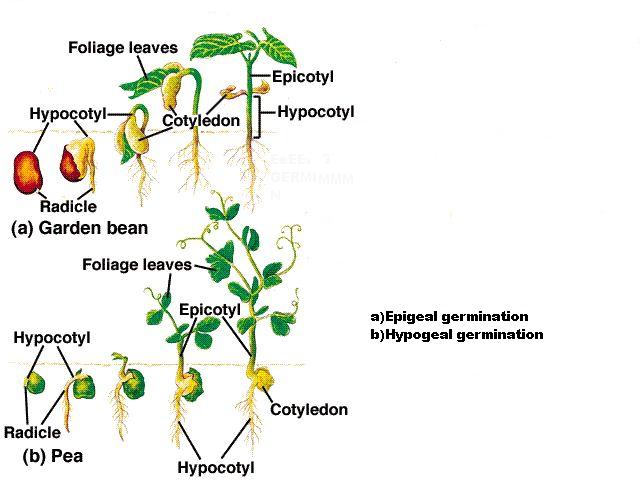Seed germination depends on both internal and external conditions. The most important external factors include temperature, water, oxygen and sometimes light or darkness.
Dicot Germination
Dicot Germination
The part of the plant that first emerges from the seed is the embryonic root, termed the radicle or primary root. It allows the seedling to become anchored in the ground and start absorbing water.
After the root absorbs water, an embryonic shoot emerges from the seed. This shoot comprises three main parts: the cotyledons (seed leaves), the section of shoot below the cotyledons (hypocotyl), and the section of shoot above the cotyledons (epicotyl).
The way the shoot emerges differs among plant groups.
- Epigeous
- Hypogeous
Another way of germination is hypogeous (or hypogeal), where the epicotyl elongates and forms the hook. In this type of germination, the cotyledons stay underground where they eventually decompose. Peas, for example, germinate this way.
Monocot germination
Monocot germination




0 comments:
Post a Comment